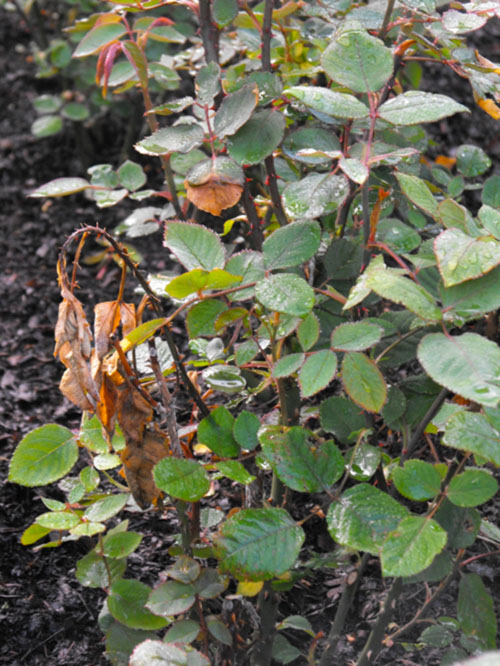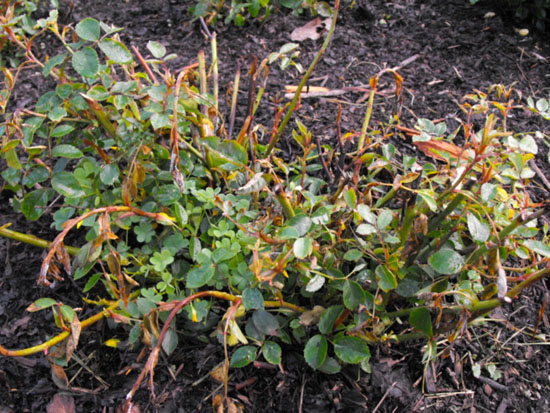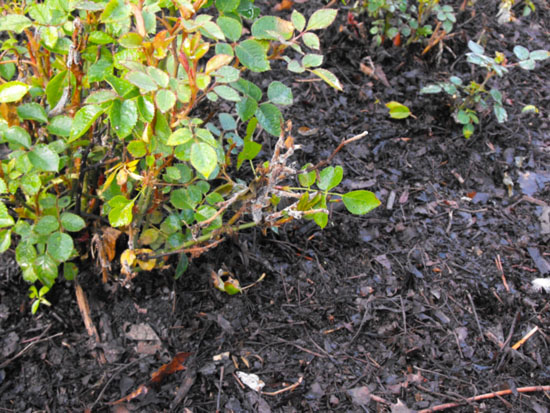Issue 5, May 21, 2012
Roses Are Red, Canes Are Dead, ...Now What?
We are still seeing the effects of the late frost on plant samples at the plant clinic. In roses, frost can destroy fresh growth and cause stems and leaves to wilt, turn black and fall away from the plant.

Signs of suspected frost injury to rose, pictures sent by a Plant Clinic client
A homeowner's first course of action usually is to prune the unsightly, frost damaged areas on their roses. My concern is the potential for disease infection could now increase not only because of the frost injury, but because many may not know the proper techniques of pruning their roses. For additional information on pruning roses, refer to the following University of Illinois Extension link: http://urbanext.illinois.edu/roses/prune.cfm
However, in the instance of the picture below a disease called Botrytis Blight had the perfect conditions to infect during this spring after frost injury had occurred. This disease can be a common occurrence in a greenhouse, but not in the garden. As we all know, every growing season can be different, especially this growing season!

Rose infected with Botrytis Blight after frost damage, Picture sent by a Plant Clinic client
Botrytis blight can be a problem during periods of continued wet weather and low temperatures. Buds of infected garden roses may fail to open or wilt and become covered with fungal growth. Lesions or cankers may form down the stem. New canes are often infected at nodes and can cause girdling or collapsing of the stems. This fungus can persist year round on plant parts and debris and as sclerotia or conidia in the soil.

Fungal growth easily seen on rose caused by Botrytis blight, Picture sent by a Plant Clinic client
The main goal to avoid this disease is to lessen humidity around plants by not watering from above, avoid dense plantings, and reduce ground cover. Cankers often develop after cold temperature injury, so early spring pruning may not effectively eliminate them if late frosts occur; additional late spring pruning may be necessary.
All infected plant parts should be cut and destroyed as soon as the first symptoms of Botrytis blight appear. This prevents the formation of large numbers of conidia that can be transported by wind. Pruning cuts should be at an angle in healthy tissue just above a node and avoid wounding canes. Stubs remaining after pruning should be no longer than 6 mm in length to encourage callus formation. Protective fungicidal sprays can be used to cover wounds. However, a major problem associated with fungicidal treatments is the development of resistance to B. cinerea. It is important to use, when available, treatments that have multiple modes of fungicidal activity. (Stephanie Porter)
Author:
Stephanie Porter